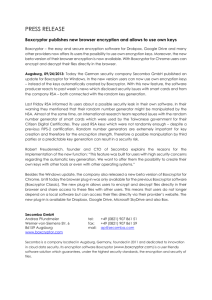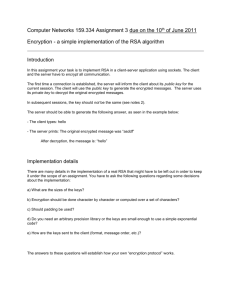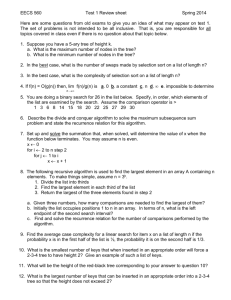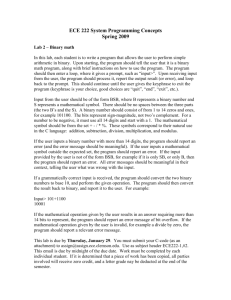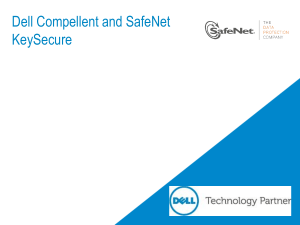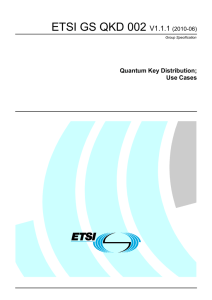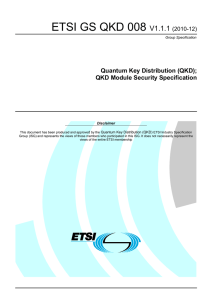Cryptography
advertisement
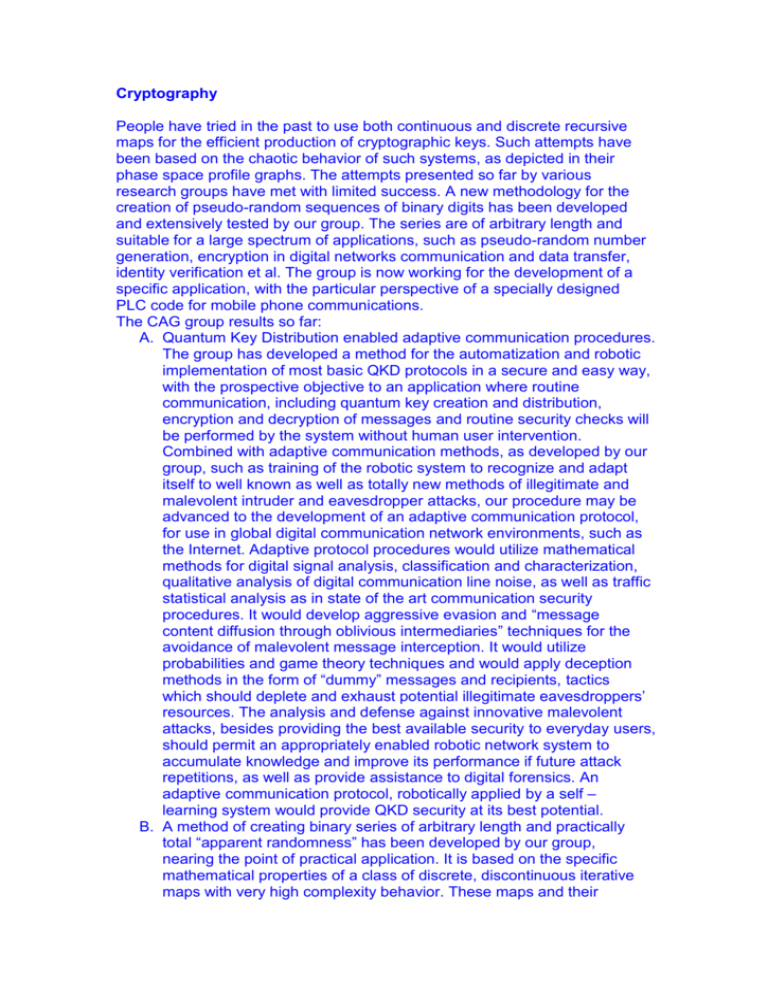
Cryptography People have tried in the past to use both continuous and discrete recursive maps for the efficient production of cryptographic keys. Such attempts have been based on the chaotic behavior of such systems, as depicted in their phase space profile graphs. The attempts presented so far by various research groups have met with limited success. A new methodology for the creation of pseudo-random sequences of binary digits has been developed and extensively tested by our group. The series are of arbitrary length and suitable for a large spectrum of applications, such as pseudo-random number generation, encryption in digital networks communication and data transfer, identity verification et al. The group is now working for the development of a specific application, with the particular perspective of a specially designed PLC code for mobile phone communications. The CAG group results so far: A. Quantum Key Distribution enabled adaptive communication procedures. The group has developed a method for the automatization and robotic implementation of most basic QKD protocols in a secure and easy way, with the prospective objective to an application where routine communication, including quantum key creation and distribution, encryption and decryption of messages and routine security checks will be performed by the system without human user intervention. Combined with adaptive communication methods, as developed by our group, such as training of the robotic system to recognize and adapt itself to well known as well as totally new methods of illegitimate and malevolent intruder and eavesdropper attacks, our procedure may be advanced to the development of an adaptive communication protocol, for use in global digital communication network environments, such as the Internet. Adaptive protocol procedures would utilize mathematical methods for digital signal analysis, classification and characterization, qualitative analysis of digital communication line noise, as well as traffic statistical analysis as in state of the art communication security procedures. It would develop aggressive evasion and “message content diffusion through oblivious intermediaries” techniques for the avoidance of malevolent message interception. It would utilize probabilities and game theory techniques and would apply deception methods in the form of “dummy” messages and recipients, tactics which should deplete and exhaust potential illegitimate eavesdroppers’ resources. The analysis and defense against innovative malevolent attacks, besides providing the best available security to everyday users, should permit an appropriately enabled robotic network system to accumulate knowledge and improve its performance if future attack repetitions, as well as provide assistance to digital forensics. An adaptive communication protocol, robotically applied by a self – learning system would provide QKD security at its best potential. B. A method of creating binary series of arbitrary length and practically total “apparent randomness” has been developed by our group, nearing the point of practical application. It is based on the specific mathematical properties of a class of discrete, discontinuous iterative maps with very high complexity behavior. These maps and their appropriately constructed symbolic dynamics may be used as “virtual encryption devices”, to be used for secure communication in digital communication networks of high complexity and traffic volume, like the Internet. Our work may be best described as follows: We have a method to generate binary number series of arbitrary length, to be used as encryption keys in a Vernam type, “one time only use”, encryption protocol. The implementation of the key is the same as in all ‘one time key’ applications. The key is added bit by bit, by a XOR operation, to the unencrypted binary file containing the message. The receiver of the message applies the same XOR operation to decrypt it. Our keys are created by the use of a family of discontinuous discrete dynamic systems and their symbolic dynamics. Yet they appear as ‘random’ series of binary digits to a third party. The apparent ‘randomness’, or, in other words, the lack of any structure in the series has been theoretically proven by topological arguments and ascertained by appropriate statistical tests. In the above mentioned tests, more than two hundred keys of a length of a million bits have been tested by the most well known commercial tests available. The NIST tests and those published by Prof. George Marsaglia are included. Our keys have been 100% SUCCESSFUL. Therefore they are in principle suitable for ‘one time key’ applications. The key space created by our methodology can be made to contain an extremely large number of keys, reaching up to 101000-2000 distinct keys. The transinformation and cross correlation tests so far confirm the distinctness of the keys. Due to the above described property, the usual problems of key distribution do not exist here. No need for repeated meetings of trusted parties for distribution of new key pads. The small number of parameters necessary for the generation of each key may be included in the previous message. This way the integrity of communication is preserved. Only one initial contact is required, in order to distribute the exact form of the dynamic system and a first set of parameters. The above described communication procedure, may be successfully combined with adaptive communication methods as described in the previous section. The QKD protocols, being costly in money, as well as in time, hardware and resources, in this method would be applied for the initiation of communication, as well as occasionally for reestablishment in case of interruptions or periodic security enhancement. This would avoid the cumbersome application of QKD methods on an everyday routine basis and, arguably, would present the most viable and reasonable application of QKD methods in the Internet. Morphology A new concept in the area of morphology is introduced. It is a generalization of the thinning and skeletonization concepts. It can be used in most applications where skeletons or Voronoi sets are utilized, having specific advantages over the traditional results due to its rigorous mathematical definition. A set of rules for the construction of the innovative form of skeleton are presented, based on a mathematical description of the construction process. Certain examples are given, with an eye to specific applications, such as robotic navigation or OCR, among others. The advantages of the new concept are: Its mathematical definition based on work developed in the last 20 years in the fields of Differential Geometry and Topology. This may lead to easy and straightforward creation of the skeleton by solving a set of nonlinear algebraic equations and inequalities. Its easy and natural generalisation in more than two dimensions, due to its previously mentioned attribute. Its extension in cases not covered by other similar state of the art definitions of skeletons, as described in mathematical morphology literature. The introduction of the “maximum coordinate” metric. This is a metric suitable for work in discrete lattices, where the usual Euclidean square root metric is not appropriate.
